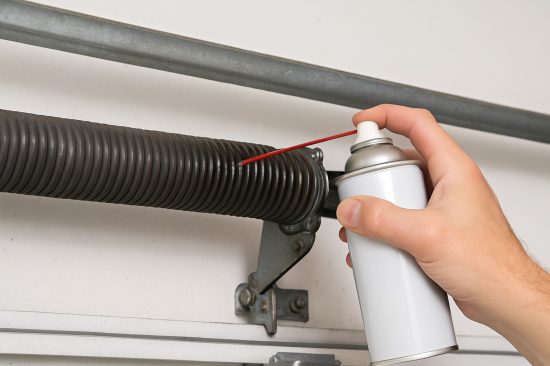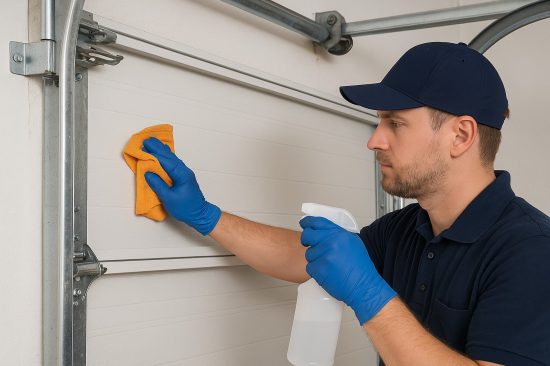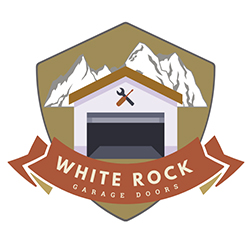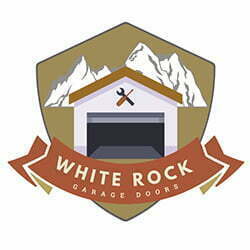How to Maintain Your Garage After Residential Garage Door Installation in Dallas
A few months ago, we completed a residential garage door installation in the Lake Highlands area of Dallas for the Martinez family. The transformation was immediate—improved curb appeal, better energy efficiency, and quieter operation thanks to insulated garage door panels and a high-quality garage door opener. But within just four weeks, they noticed the door jerking and making loud noises. The culprit? Misaligned tracks and lack of lubrication—simple issues that a basic maintenance routine could’ve prevented.
According to the Door & Access Systems Manufacturers Association (DASMA), over 75% of garage door service calls in the U.S. are due to issues that could have been avoided through regular maintenance. If you’ve recently had a new garage door installed in your Dallas home, it’s important to understand that the job doesn’t end after the final panel is in place. Maintenance is just as vital as the installation process itself.
At White Rock Garage Doors, we believe that a successful garage door installation includes educating our customers on how to maintain the door, opener, and all related components. This comprehensive guide will walk you through every necessary step to ensure your garage door system continues to function smoothly and safely for years.
Why Maintenance After a Residential Garage Door Installation Is Crucial
After a professional residential garage door installation, the components are new, aligned, and properly tensioned. However, as time passes, these parts endure regular wear and tear. The torsion springs lose elasticity, hinges loosen, and horizontal tracks can shift due to repeated use or vibrations. Without proper routine maintenance, this can compromise the smooth operation, safety, and even the lifespan of your garage door.
Some of the common consequences of skipping post-installation care include:
- Warped or cracked garage door panels
- Excess noise from rollers or drums
- Misaligned vertical tracks
- Broken brackets, cables, or hinges
- Excessive spring tension leading to sudden failure
- Decreased energy efficiency due to worn-out insulation or weather seals
Regular inspections and adjustments help keep your garage door system operating safely, extend the life of the components, and reduce your long-term repair costs.
Step-by-Step Guide to Garage Maintenance After Installation
Step 1: Visual and Auditory Inspection of Garage Door Operation
Start by simply watching and listening to the door as it opens and closes. The motion should be smooth, and the noise level minimal. Keep an eye on:
- The alignment of garage door sections
- Movement along the vertical track and horizontal tracks
- The condition of the bottom panel, hinges, and springs
- Any unusual popping, scraping, or grinding noises
These early signs can alert you to problems in the garage door opener, torsion tube, or cable drums.
Step 2: Test the Safety Features and Sensors
Your garage door system is equipped with crucial safety mechanisms to prevent injury and property damage:
- Auto-reverse mechanism: This feature causes the door to reverse direction if it encounters an obstacle. Place a roll of paper towels under the garage door opening. If it doesn’t reverse upon contact, your garage door opener may need recalibration.
- Safety sensors: Mounted on either side of the garage opening, these photo eyes should be aligned properly. Interrupt the beam with your hand while the door is closing. If the door doesn’t stop and reverse, clean the lenses and check the wiring.
These components ensure safe operation, especially in households with children or pets.
Step 3: Tighten Bolts, Brackets, and Hinges
The vibrations from regular garage door operation can loosen hardware over time. Use a socket wrench to inspect and tighten:
- Zinc hex lag screws on the center bracket
- Bolts on the flag brackets, hinges, and support struts
- Fasteners on torsion springs and torsion tube mounts
- Any ceiling-mounted opener brackets or rails
Avoid overtightening, which may damage metal components or strip threads.
Step 4: Lubricate Moving Parts for Smooth Operation

A quiet garage door is a well-lubricated door. Every 3–6 months, apply silicone-based or lithium-based lubricant to:
- Rollers (avoid plastic ones)
- Torsion springs and bearings
- Hinges and pivot points
- Drums, torsion bar, and center bearing bracket
- Screw drive or chain drive mechanisms on the garage door opener
Do not use WD-40, which strips away protective grease. Instead, use products specifically formulated for garage doors.
Step 5: Inspect Weatherstripping and Insulation
The Dallas climate brings intense summer heat and occasional winter freezes. Your garage’s energy efficiency depends on intact weather seals and door insulation. Inspect:
- Bottom seal and side seals for cracks or gaps
- Foam or polyurethane insulation between garage door panels
- R-value printed by the manufacturer (higher is better for insulation)
Replace any worn weatherstripping to protect your garage interior and reduce energy consumption.
Step 6: Clean the Tracks, Door Panels, and Surrounding Area

Dirt, dust, and debris often build up in the garage door tracks and on the door panels. Cleaning helps ensure proper operation and prevents corrosion.
- Wipe the vertical and horizontal tracks with a dry cloth
- Do not lubricate the tracks this attracts dust
- Clean the garage door sections with mild soap and water
- Use a brush to remove cobwebs around the torsion springs and brackets
This step is especially important in dusty or high-pollen areas like certain Dallas neighborhoods.
Step 7: Check Balance and Torsion Spring Tension
Your garage door springs are vital for safe, efficient lifting. To test the balance:
- Disconnect the garage door opener using the manual release.
- Raise the door halfway and let go.
A balanced door should stay in place. If it falls or rises quickly, the torsion spring tension may need adjustment. This job should only be performed by a professional garage door technician, as springs under high tension can cause serious injury.
Step 8: Maintain and Update the Garage Door Opener
Your garage door opener should be maintained just like the door itself. Maintenance includes:
- Replacing the remote batteries regularly
- Updating firmware on smart garage systems
- Checking the emergency release cord for wear
- Inspecting mounting brackets and ceiling tracks
Make sure the opener’s force and travel limits are correctly set according to the manufacturer’s installation instructions.
Seasonal Maintenance Tips for Dallas Homeowners
Spring/Fall
- Inspect cables, pulleys, and garage door hinges
- Schedule a full garage door tune-up with a local technician
- Re-lubricate all moving garage door parts
Summer
- Clean and check the garage door insulation
- Inspect the garage door opener motor for signs of overheating
- Ensure smooth opening and closing during extreme heat
Winter
- Test and lubricate the bottom seal to prevent sticking
- Clear ice buildup from the garage door tracks
- Use a space heater in an uninsulated garage to prevent damage to the opener components
What Not to Do After a Garage Door Installation
Even after a professional garage door installation, you could unknowingly cause problems by:
- Hanging storage from the garage door tracks or the torsion tube
- Overusing the garage door as your main entrance (wears out the door system faster)
- Attempting DIY spring repairs without proper tools like vise grips, cones, or a calibrated tension bar
- Ignoring noises, jerky movement, or slow garage door operation
Always follow your installation instructions and consult your technician if something doesn’t seem right.
✅ Frequently Asked Questions (FAQs)
How long after installation should I get my garage door professionally serviced?
You should schedule your first professional service within 12 months after installation, then continue with annual maintenance checkups.
Can I use my garage door during a power outage?
Yes, you can operate the garage door manually by pulling the emergency release cord, typically located near the opener trolley.
What type of lubricant should I use on my garage door?
Use a non-silicone, lithium-based garage door spray lubricant specifically designed for metal parts avoid using WD-40 or grease.
Is it safe to install garage door insulation myself?
Yes, many insulation kits are DIY-friendly, but ensure they don’t interfere with the door’s balance or weight, as this could affect spring tension and opener performance.
How Can White Rock Garage Doors Help You?
At White Rock Garage Doors, we do more than just install garage doors—we help homeowners across Dallas, TX, and surrounding areas get the best performance and value from their investment. Whether you need help understanding your garage door installation instructions, fixing track alignment, or adjusting spring tension, our expert technicians are here for you.
We specialize in:
- Post-installation safety inspections
- Preventive maintenance and full system tune-ups
- Garage door opener troubleshooting and upgrades
- Replacing damaged panels, brackets, or hinges
- Installing weather-resistant insulation and seals
With years of experience in residential and commercial projects, our team ensures that your garage door system operates safely and efficiently year-round.
📍 Visit Us At:
White Rock Garage Doors
11615 N Central Expy, Dallas, TX 75243
📞 Call Now for Maintenance Help or Emergency Repairs:
(214) 296-9993
Let us help you keep your garage doors in excellent shape long after installation. With White Rock Garage Doors, you’ll enjoy smooth, quiet, and safe garage door operation every time.

